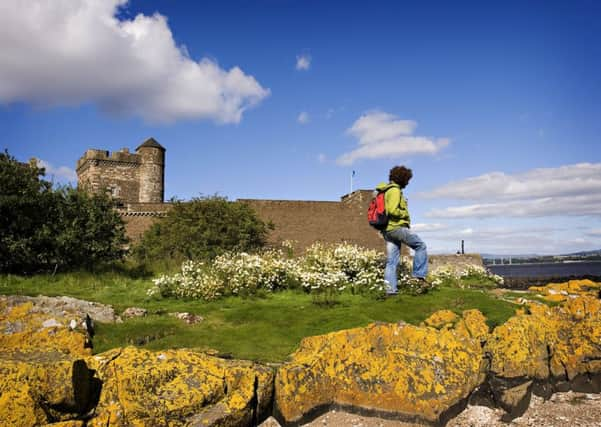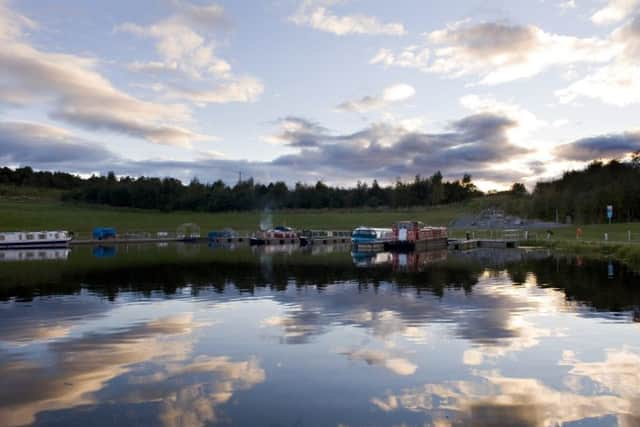Everything you need to know about walking the John Muir Way


The route is named after the renowned Scottish-born conservationist John Muir, who was born in Dunbar in 1838. His activism helped to save the Yosemite Valley National Park, as well as many other areas of wilderness in the United States.
The John Muir Way was proposed in 2010 by the Central Scotland Green Network, and was completed in 2014, to coincide with the 100th anniversary of John Muir’s death.
Advertisement
Hide AdThe route is 134 miles or 215 kilometres long, and takes between seven and ten days for walkers. However, cyclists can reach the end of the route in about half that time.


To help you make the most the John Muir Way, we have found the best accommodation and places to eat along the route. We also have recommendations of essential kit for walkers, a summary of the walking and cycling routes, and details of the wildlife you may spot along the way.
Kit required
While walking along the John Muir Way, you need to make sure you have all the essential kit, to make sure you are warm, dry and safe.
You will need windproof, waterproof clothes which are quick to dry. It is also helpful if they pack away small, making them easier to carry.


As Scottish weather is very variable, with temperatures ranging between 12 and 25 degrees Celsius in summer, it’s best to be prepared for all eventualities. Make sure you have a warm hat and gloves, as well as a sun-hat and sunglasses, just in case.
Other items which are useful to have on this walk are: food, water, a map, a phone, a First Aid Kit, sunscreen, insect repellent and tick removers.
Accommodation
Lagganbeg Holiday Park
(Strathaber, Alexandria G83 8NQ, 01389 830281)
Advertisement
Hide AdThis charming holiday park is five minutes’ walk away from the shores of Loch Lomond. It is situated deep within Scotland’s first national park, Loch Lomond and the Trossachs.
It is also located between the pretty village of Drymen, and Balloch, the “gateway to Loch Lomond”. Caravans, mobile homes and tents are all welcome here.
Beecraigs Caravan and Camping Site
(Linlithgow EH49 6PL, 01506 844516)
Advertisement
Hide AdThis site can be found in the Bathgate Hills, and is part of Beecraigs Country Park.
It has been awarded four stars by the Scottish tourist board, and has caravan pitches, as well as comfy Little Lodges for glamping.
Facilities include an adventure play area, and BBQ provisions.
Seton Sands Holiday Park
(Links Rd, Port Seton EH32 0QF, 01875 813333)
The holiday park overlooks the Firth of Forth, and is set in picturesque countryside. The park includes a nine hole obstacle course, and Seton Sands beach is just opposite. You can stay in a modern, well-equipped caravan, and visit the pool on a sunny day.
Glenskirlie House and Castle
(Kilsyth Rd, Banknock, Bonnybridge FK4 1UF, 01324 840201)
This boutique-style castle hotel has fifteen individually-styled bedrooms, including two opulent “Castle Suites”. There are also two award-winning restaurants in the hotel, making it the perfect place to treat yourself after a long day of walking.
Fenton Tower
(Kingston, North Berwick EH39 5JH, 01620 890089)
The site for Fenton Tower was chosen in the 11th century, mainly for the panoramic views on all sides. The castle was once visited by James VI, the son of the infamous Mary Queen of Scots. It is surrounded by golf courses, and offers ample opportunities for guests to go shooting, fishing and horse-riding.
Places to eat
La Barca, Helensburgh
(33 W Clyde St, Helensburgh G84 8AW, 01436 268518)
Advertisement
Hide AdLa Barca is a convivial tapas restaurant and wine bar with a warm, friendly atmosphere. Make sure to try the montado de lomo – fillet of pork loin marinated in garlic and paprika, and served on Catalan bread. Another dish to try is the pollo alla gabardina – deep fried chicken in a light crispy beer batter, with sweet chilli sauce.
The Boathouse Pub, Kilsyth
(Auchinstarry Marina, Kilsyth G65 9SG, 01236 829200)
The Boathouse is in the Auchinstarry Marina, Kilsyth, on the popular route along the Forth and Clyde Canal. Customers can take a stroll through the scents and sensitivities garden, and sample such delights as the smoked haddock gratin, or the chicken piri-piri.
Johnston’s Bar Bistro, Falkirk
(14 Lint Riggs, Falkirk FK1 1DG, 01324 637299)
Advertisement
Hide AdThis modern restaurant and bar in Falkirk has a large selections of wine and spirits to choose from. Noteable dishes include the steamed mussels and the wild mushroom risotto. A perfect place to take a break from all that walking!
Four Marys, Linlithgow
(65-67 High St, Linlithgow EH49 7ED, 01506 842171)
This cosy pub is named after the four ladies in waiting to Mary Queen of Scots, who was born at the nearby Linlithgow Palace. It has low ceilings, stone walls, and plenty of nooks and crannies to hide away in. The menu contains hearty pub fare, such as haggis potato pie and Scottish scampi.
The Herringbone, North Berwick
(1-3 Westgate, North Berwick EH39 4AE, 01620 890501)
The Herringbone specialises in local craft beers and carefully selected wines. All dishes are made with seasonal and regional ingredients, prepared without pretension or fuss. The restaurant is open all day for food, with dishes like East Lothian lamb and line-caught sea bass, as well as a selection of freshly baked cakes.
Wildlife
During your journey along the John Muir Way, you are sure to come across some of Scotland’s wildlife. You may meet otters in the Clyde near Helensburgh, or kestrels at Balloch. Barn owls are known to nest near Falkirk, and South Queensferry is a great place to spot grey seals.
Bird life is abundant in the wetlands by Prestonpans, where wading birds are common, and there are innumerable sea birds to spot at North Berwick, on the east coast.
Walking the route
The John Muir way can be split into ten stages: Helensburgh to Balloch, then on to Strathblane, Kilsyth, Falkirk, Linlithgow, South Queensferry, Edinburgh, Prestonpans, North Berwick, and, finally, Dunbar.
Advertisement
Hide AdThe route goes from “coast to coast”, and takes between seven and ten days to walk the entire way. Dotted along the route are various places of national, historical and industrial interest.
The paths vary in type and quality, with muddy tracks, canal towpaths, pavements and minor roads all part of the route. Mostly, you will only have to walk on easy gradients, but there are a few hill climbs along the way.
Advertisement
Hide AdThe highest points on the John Muir Way are: Gouk Hill (277m) is just outside Helensburgh, followed by Bar Hill (155m) and Croy Hill (150m) near Kilsyth. In Edinburgh, you can climb the famous Arthur’s Seat (251m), and North Berwick has its own “Law” or Hill (187m).
There are signposts for both walkers and cyclists along the route to keep you on the correct path. For people walking west, follow the signs marked with a “W”, and for those walking east, follow the signs marked with an “E”.
Cycling the route
To cycle along the entirety of the John Muir Way takes about four or five days. The cycle is sometimes challenging, but takes you through some lovely countryside. It is not a direct route, but makes its way through interesting landscapes and past places of interest.
The best types of bicycle for this route are mountain, hybrid or touring bikes with puncture-proof tyres. Heavily laden bikes may not fare well on the route, due to some kerb edges and tight corners.
Also, due to some of the surfaces and gradients, cyclists may need to push their bikes, and sometimes also in presence of pedestrians. Short sections of the route are on busier roads, so you need some cycling experience for these sections.
In some places there are cycling ‘braids’ which have more smooth and flat tracks than the walking route, and are better suited to touring bikes. There are signs for both walkers and cyclists, indicating which path to take heading west (“W”) or east (“E”).
